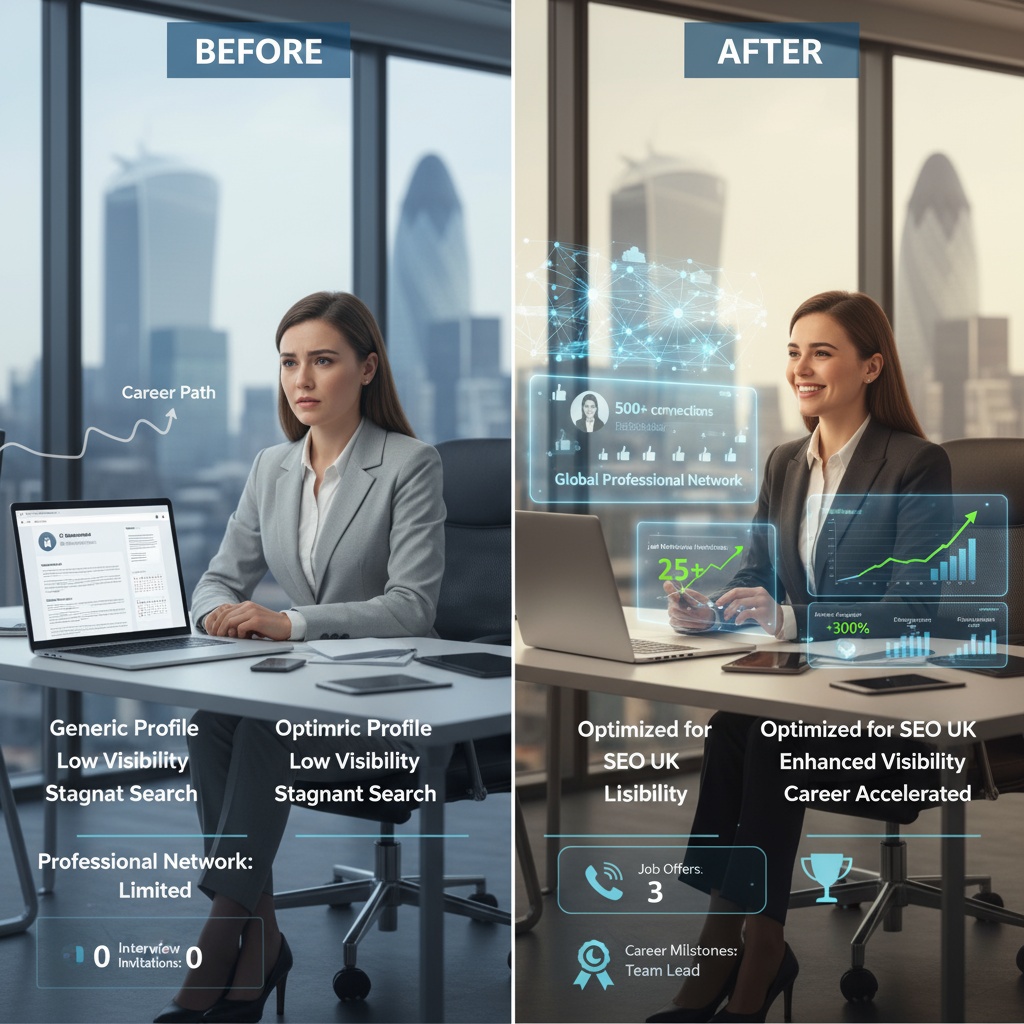In today’s highly competitive job market, personal branding has become a crucial part of job-seeking success in the UK. From LinkedIn profiles to professional portfolios, how you present yourself online determines how employers perceive your credibility and potential. But while creating an impressive personal brand is important, measuring its impact is equally vital.
For many UK job seekers — especially fresh graduates and early-career professionals — the real question isn’t whether personal branding works, but how to measure its effectiveness. This blog explores practical, data-driven ways to track your personal branding progress and refine your professional image for better career outcomes.
Understanding Personal Branding Metrics:
Before diving into numbers, it’s important to understand what you should be measuring. Personal branding metrics go beyond likes and follows. They represent your visibility, engagement, and influence within your professional community.
For UK job seekers, these metrics can include:
- Number of recruiter views and profile visits
- Growth in professional connections
- Engagement on posts (likes, comments, shares)
- Mentions or tags in industry conversations
- Invitations to collaborate or attend events
Tracking these elements provides a clear view of whether your professional identity is attracting attention and trust in the right spaces.
Using Social Media Analytics Effectively:
Platforms like LinkedIn, X (formerly Twitter), and Stunited provide detailed analytics that can help job seekers understand their digital performance.
On LinkedIn, for example, you can monitor:
- Profile views (who’s checking your profile and from which industries)
- Post impressions and engagement rates
- Follower growth trends
- Search appearances
For fresh graduates, even small improvements — such as a consistent rise in post engagement or recruiter interactions — signal growing visibility. Similarly, on Stunited, UK students and professionals can track how their skill posts, portfolios, and collaborations perform within niche communities.
The key is to review these insights regularly and align them with your career goals — whether that’s getting noticed by employers or building a thought-leader reputation.
Tracking Profile Performance Across Platforms:
Your professional profiles are the digital equivalent of your CV and first impression. To measure their effectiveness:
- Analyse how many recruiters view your LinkedIn or Stunited profiles.
- Check if your portfolio link (on GitHub, Behance, or a personal website) receives regular visits.
- Monitor endorsement growth — for example, new skill endorsements or recommendations.
Job seekers should focus on consistency. A strong LinkedIn headline, a well-structured Stunited profile, and a keyword-rich portfolio all work together to create a unified, recognisable personal brand. When all platforms show increasing engagement, it’s a good indicator that your professional image is resonating with your target audience.
Read more: Personal Branding Strategies That Work in the UK
Engagement vs. Conversion: Understanding the Difference:
It’s easy to mistake high engagement for success. However, a truly effective personal brand leads to conversion — such as interview calls, recruiter outreach, or collaboration requests.
Here’s how to differentiate:
- Engagement: Likes, comments, or followers on your posts.
- Conversion: Invitations for interviews, freelance work, or networking events.
While engagement shows interest, conversion reflects trust and credibility. Measuring how often engagement leads to actionable outcomes helps UK job seekers understand whether their brand merely attracts attention or actually delivers opportunities.
Recruiter Interactions and Job Responses:
Recruiter interest is one of the most concrete ways to measure your personal branding success.
Track the following:
- How many recruiters view or contact you on LinkedIn or Stunited
- Frequency of job invitations or interview messages
- Quality of responses from employers after you apply
If you notice an increase in recruiter activity, your brand is effectively communicating your value. On the other hand, if your visibility is high but job conversions remain low, it may indicate that your messaging or profile content needs refining — perhaps your summary lacks clarity or your skills don’t match your job goals.
Monitoring Google Search Presence:
Your Google footprint says a lot about your personal brand. When recruiters or potential employers search your name, what do they find?
To measure your visibility:
- Google your full name with your profession (e.g., “Sophie Allen Marketing UK”).
- Check what appears on the first page — LinkedIn, Stunited, portfolios, articles, etc.
- Use Google Alerts to get notified when your name appears online.
If your professional profiles appear at the top, that’s a positive sign. It means your brand is being recognised and ranked well. For graduates, publishing content like blogs or portfolio case studies can also help boost visibility in search results.
Measuring Content Impact and Thought Leadership:
Sharing knowledge-based content is one of the strongest tools for personal branding. It builds credibility and positions you as an informed professional.
Measure your content impact through:
- Post reach and shares on LinkedIn or Stunited
- Comments from peers and industry experts
- Invitations to contribute to group discussions or webinars
For instance, if you post insights about digital marketing trends in the UK and receive comments from recruiters or professionals, it shows your content is resonating. Over time, this consistent visibility strengthens your authority and trustworthiness in your field.
Evaluating Networking Growth:
Networking is the backbone of personal branding. Every meaningful connection adds to your influence.
UK job seekers can track:
- Growth in quality connections (recruiters, mentors, industry peers)
- Invitations to professional events or online communities
- Endorsements or collaboration requests
The goal isn’t to accumulate hundreds of random followers, but to build a targeted professional circle. A smaller, more relevant network that engages with your content regularly is far more valuable than a large inactive one.
Read more: How Personal Branding Drives UK Small Business Success
Leveraging Personal Branding Tools and Analytics:
Thanks to digital tools, you don’t need to guess how your personal brand is performing.
Some effective options include:
- LinkedIn Analytics – for post insights, search appearances, and audience demographics
- Shield App – a LinkedIn analytics tool that tracks engagement growth over time
- Google Analytics – to monitor traffic to your personal website or online portfolio
- Canva and Metricool – for social post analysis and design consistency
- Stunited Insights – for evaluating profile visibility within UK student and graduate networks
These tools provide tangible data on how your brand is performing and help identify areas that need more focus, such as content consistency or audience engagement.
Creating a Continuous Improvement Strategy:
Personal branding isn’t a one-time effort — it’s an evolving process.
Here’s a simple routine UK job seekers can follow:
- Review analytics monthly (LinkedIn views, engagement, followers).
- Identify top-performing content — what posts or portfolio updates attract the most attention.
- Refresh your headline, summary, and skills quarterly.
- Network actively — comment on others’ posts, join webinars, and share insights.
- Document growth milestones — connections gained, job interviews, collaborations.
By treating personal branding as an ongoing strategy rather than a short project, job seekers can ensure their online presence continues to align with career goals and market expectations.
Final Thoughts
For UK job seekers and graduates, measuring personal branding impact isn’t just about counting likes or followers. It’s about understanding how your digital presence drives real career results — visibility, connections, interviews, and job offers.
By using analytics tools, monitoring recruiter interest, and tracking engagement patterns, you can refine your professional identity to make a lasting impression in the UK job market.
Remember, your personal brand is not what you say about yourself — it’s what others perceive and respond to. Measure it, improve it, and let your digital reputation open new doors of opportunity.
Get Personal Branding with complete interview assistance for UK jobs: www.brandme4job.com
Get your CV checked and improve it with section based detailed recommendation, for free: Brand Me 4 Job Free CV Check!
Joinwww.stunited.org to build a wide network in the United Kingdom.
Contact us to get Career Assistance in the UK: Call Us Now!
To get regular job, career, and industry updates along with important UK jobs-related information, follow us on: Instagram, LinkedIn & Facebook
#PersonalBrandingUK #UKJobSeekers #CareerGrowthUK #GraduateSuccess #JobSearchTipsUK #BrandImpact #ProfessionalBranding #LinkedInAnalytics #CareerDevelopmentUK
#DigitalPresenceUK #OnlineBranding #StunitedUK #CareerBuildingUK #EmployabilitySkillsUK #PersonalBrandGrowth #UKGraduates #NetworkingUK #JobMarket2025 #DigitalCareerUK
#CareerStrategyUK #BrandVisibility #ProfessionalReputation #PersonalBrandingTips #GraduateCareersUK #UKProfessionals #OnlineIdentityUK #CareerSuccessUK #BrandAnalytics
#UKJobMarket #PersonalBrandImpact





